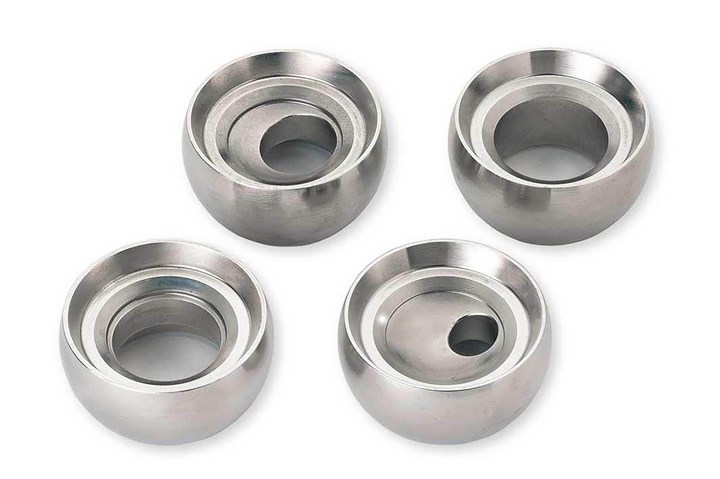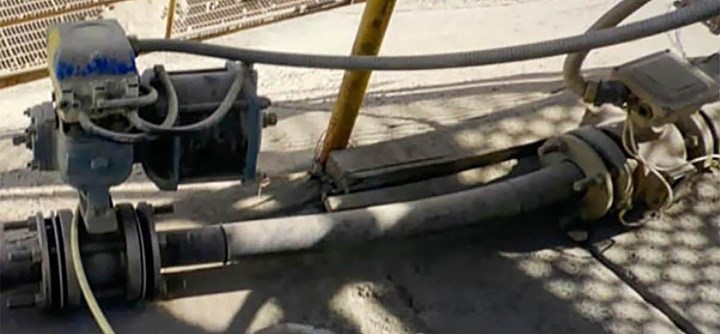Undefined and Overlooked Valve Selection Considerations
Startup and shutdown, cleaning and emergency upset conditions should be
accounted for when selecting valves for your system.
#knowyourvalves
Valve specification and selection is an important element in the success of a new process system. A considerable amount of time is invested and dedicated to specifying the correct valves for the defined operating conditions and piping arrangement. Unfortunately, the same amount of time and attention is usually not given in considering capacity changes, product changes and operational variations. These undefined variations often cause problems in the system that require detailed analysis and may require a production shutdown to resolve the issue.
The undefined operating variations may relate to startup and shutdown processes, cleaning process, and emergency and upset conditions, and are typically more severe than the actual defined operating conditions. Additionally, there are expectation variations between isolation and control valves that should be considered, as well as process growth capabilities. As a result, the following undefined and overlooked considerations should be assessed in valve selection for optimum valve performance and future growth adaptability.
STARTUP/SHUTDOWN
Many valve sizing programs can predict damaging situations such as cavitation, flashing and noise under various flow conditions. A misleading assumption is that startup and shutdown conditions are rare events and will not harm the valve. If startup and shutdown flow conditions are excluded from the valve sizing, then the selected valve may fall out of the capability range during startup and shutdown and perform poorly.
It is common for startup and shutdown concerns to be addressed with a control scheme during initial system commissioning. The specification process usually does not account for short-term, potentially damaging, service conditions such as pump control, which is typically not addressed in the control scheme. For example, a low-concentrate slurry may have little effect on standard control valve surfaces under normal operating conditions, but during startup, the control valve may be intentionally left slightly open to prevent piping damage from filling the system too quickly. During this startup, the increased velocity across the seat of the valve causes the slurry to erode the internal surfaces of the valve, thereby prematurely degrading the valve and impacting its performance and longevity.
CLEANING
Cleaning processes are often overlooked and can have a dramatic impact on valve performance. This is especially true with valves using elastomeric components for sealing. As cleaning processes typically incorporate steam or chemicals (or both) to clean the lines, care must be taken in selecting materials that are compatible with the cleaning media and process conditions. It is best practice to ask about the cleaning process during valve selection to avoid compromising valve performance.
EMERGENCY & UPSET CONDITIONS
Loss of power and emergency shutdown procedures also impact valve operation. In the case of isolation valves, manual overrides may be required for critical applications when solenoid valves are inoperable due to power failure. Control valves are often equipped with spring-diaphragm-style actuators that have a mechanical fail position. However, control valves can also utilize double-acting cylinders or electric motor actuators. These actuators will fail in “last position” upon air or power failure. Because terminology and understanding are not universal, it is important to clearly define what should happen during air or power failure. For example, during power failure the valve positioner will lose signal, thus driving the output to fully open or close the valve depending on designation. Although the air compressor will also lose power, residual supply pressure in the system can continue to cycle the valve to an undesirable position.
Upset conditions including pressure, temperature and media abnormalities that may occur during an upset event need to be considered and reviewed. Surge protection may be required for pressure upsets. Elastomer selection may be affected by temperature spikes. Slurries may settle and plug piping, potentially causing a variety of issues from spills to dangerous exposure.
ISOLATION VALVES
Valve manufacturers reference applicable standards in their documentation but do not typically publish the actual test criteria from the standard. Rather, they state whether the valve meets or exceeds the standard. The standards are published by organizations such as the American Petroleum Institute (API) and they define the test procedures and acceptable leakage rates for various valve types. It is up to the specifying engineer to understand the application criteria and apply the correct valve type based on the isolation capability requirement for the system. If a testing standard clearly meets the application criteria such as API 598 for the oil and gas industry, the selection may be as easy as choosing a valve that meets that standard.
However, when considering a knife gate valve for isolation in pulp and paper, the decision may not be as clear. Under Manufacturers Standardization Society of the Valve and Fittings Industry (MSS), the MSS-SP81 standard states that a unidirectional metal seated knife gate valve is allowed to leak 40 milliliter/minute (ml/min) per inch of valve diameter with 40 pounds per square inch (psi) line pressure against the gate. With an elastomer seated, unidirectional valve, the leakage rate must be specified or may refer to MSS-SP61, which has a lower leakage rate. If the system has only minimal line pressure available to assist in seating the valve (less than 40 psi), this should be communicated to the valve manufacturer so that testing to actual service conditions can be conducted or a bidirectional elastomer seated valve may be considered.
A clear understanding of the isolation requirement is necessary when specifying a valve since requirements can vary greatly. For example, a metal-seated valve with an allowable leakage rate may be suitable for 4% pulp stock slurry but would not be suitable for isolating a sodium hypochlorite pump for maintenance by a technician.
SPECIALIZED ISOLATION
A valve used for isolating a bulk feeder from a hopper under normally flowing conditions will not be able to shutoff under a static condition or through a standing column of media. Under normal flowing conditions, a standard knife gate would slice through the flowing column and isolate. However, if the bulk feeder stalls and the column fills, the standard knife gate will not be able to successfully cut through the column of material to adequately isolate the feeder from the hopper for maintenance. Other possible valve solutions would be an O-port knife gate or specialized, tapered body knife gate with space fabricated into the valve body to displace the column of material as shown below in Figure 1.

Figure 1. A specialized tapered body knife gate valve with a fabricated displacement pocket in the body which enables the valve to close against a standing column of dry, packed material.
Photo Credit: DeZURIK
Double block and bleed or double isolation and bleed valves are often specified for increased safety in many industries and are common in the oil and gas industry. These valves provide a detection port to verify acceptable shutoff from the isolation valves. It is important to consult the valve manufacturer who is familiar with this style of valve and application since terminology, understanding and expectations can vary greatly.
CONTROL VALVES
Control valves, with a few exceptions, should not be expected to perform double duty as a control valve and an isolation valve. Control valves are available with various seat options for different media and application requirements. For example, soft seats such as polytetrafluorethylene (PTFE) for food service, metal seats for scraping the ball or plug in scaling services, and other special seats for critical or unique capabilities such as fire-safe requirements are available. In some applications such as slurry control, the flow control component may never contact the seat and is referred to as a “clearance seat.” These variations in seat requirements may make the control valve unsuitable for isolation.
FUTURE FLOW REQUIREMENTS
Occasionally a control valve is sized for current conditions with the idea that it will also work for future planned expansions and alternate product runs. The assumption that the selected valve will work for future expansion may produce unsatisfactory results as actual service conditions may be outside the ideal control range. A better solution is to specify a control valve with multiple internal, replaceable control components to accommodate the current application as well as future expansion. Recently, a South American copper mine selected a rotary control valve that could be equipped with four interchangeable flow capacity range seat designs as shown below in Figure 2. This allowed the mine to install a 2-inch rotary control valve body in its raffinate control on heap leach pads as shown below in Figure 3. When the mine was ready to increase flow capacity, it simply changed the valve seat trim size. This simple component change eliminated an additional valve purchase, labor costs and expensive piping changes.

Figure 2. Four interchangeable seat trim sizes for a rotary control valve allowed a mine to increase capacity and maintain accurate control without replacing the valve body.

Figure 3. A copper mine installed a two-inch rotary control valve body in its acid raffinate control on heap leach pads. When the mine was ready to increase flow capacity, it changed the valve seat trim size thereby eliminating labor-intensive and expensive piping changes.
CONCLUSION
When specifying and selecting a valve for a new process system, it is essential that as much time and attention be given to the undefined or overlooked operating conditions as is given to the defined operating conditions. The undefined operating conditions such as startup and shutdown processes, cleaning process, and emergency and upset conditions may be more detrimental to the valve than the defined operating conditions. If overlooked these conditions may require a costly shutdown to execute a detailed analysis to resolve the problem. It is also important to understand valve requirements related to isolation or control and if the control valve is expected to accommodate process growth changes. Inquiring about this additional information upfront while specifying and selecting the valve will ensure the best valve is selected to handle both defined and undefined operating conditions and will provide the best performing valve for the process system.
Lea Clauson is currently Technical Marketing Engineer for DeZURIK, Inc. (DeZURIK.com) and has worked at DeZURIK for over a decade in various application engineering and materials engineering roles. She earned her degree in Chemical Engineering from the University of Minnesota in 1995. She can be reached at lea.clauson@dezurik.com.
RELATED CONTENT
-
Pinch Valves: An Uncomplicated Valve With an Important Purpose
Used in on/off or throttling applications, choosing the right style pinch valve depends on the application.
-
Weight-loaded, Low-pressure Protection Devices 101
In the world of low-pressure and low-vacuum relief valves—defined for this article as valves with settings less than 15 psig—there are several different common valve configurations.
-
Fundamental Operation of Pilot-Operated Safety Relief Valves
In this second of a series, we explore another type of pressure relief valves used in common applications.










 Unloading large gate valve.jpg;maxWidth=214)